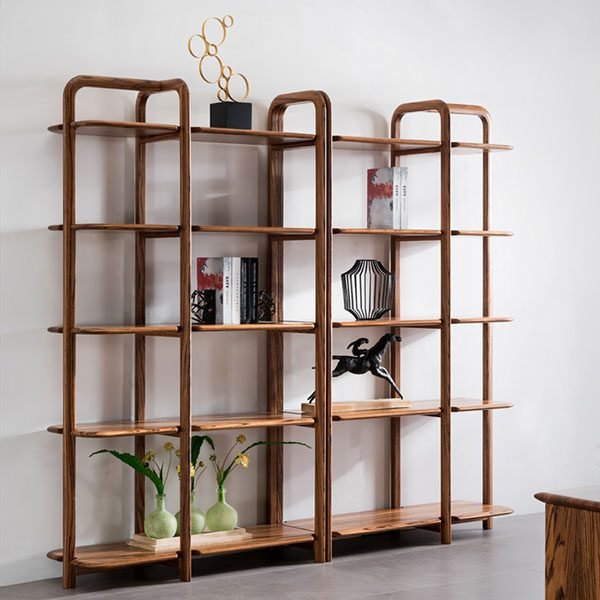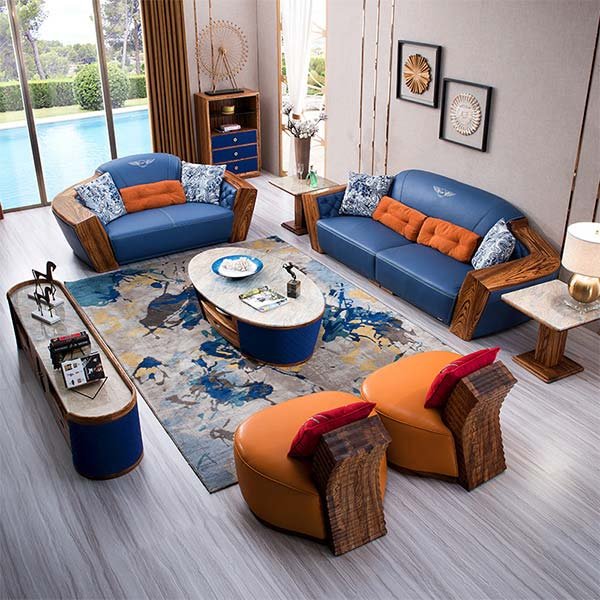“Maximize space, minimize clutter – arrange your furniture with care!”
Utilize multifunctional furniture
Arranging furniture in a one-bedroom apartment can be a challenging task, especially when space is limited. One way to make the most of your space is to utilize multifunctional furniture. Multifunctional furniture is designed to serve more than one purpose, making it ideal for small spaces.
One popular piece of multifunctional furniture is a sofa bed. A sofa bed can be used as a comfortable seating option during the day and easily converted into a bed for overnight guests. This is a great way to save space in a small apartment while still providing a place for guests to sleep.
Another option for multifunctional furniture is a storage ottoman. A storage ottoman can serve as a footrest, extra seating, and a place to store blankets, pillows, or other items. This is a great way to keep your living room organized and clutter-free.
In the bedroom, a bed with built-in storage can be a game-changer. This type of bed typically has drawers or compartments underneath the mattress, providing extra storage space for clothing, shoes, or other items. This can help maximize storage in a small bedroom and keep the space looking tidy.
When arranging furniture in a one-bedroom apartment, it’s important to consider the flow of the space. Make sure there is enough room to move around comfortably and that furniture is not blocking any doorways or windows. Consider the placement of each piece of furniture to create a functional and visually appealing layout.
In the living room, consider placing the sofa against a wall to free up space in the center of the room. Add a coffee table or side tables for a place to set drinks or books. If space allows, consider adding a small armchair or accent chair for additional seating.
In the bedroom, place the bed against a wall to create a focal point in the room. Add nightstands on either side of the bed for a place to set lamps or alarm clocks. Consider adding a dresser or wardrobe for additional storage space.
When arranging furniture in a one-bedroom apartment, it’s important to think vertically as well as horizontally. Consider using wall-mounted shelves or bookcases to free up floor space and add storage. Hang curtains high above windows to create the illusion of height and make the room feel larger.
Overall, arranging furniture in a one-bedroom apartment requires careful planning and consideration of the space available. By utilizing multifunctional furniture, considering the flow of the space, and thinking vertically, you can create a functional and stylish layout that maximizes the space in your apartment.
Create designated zones
When it comes to arranging furniture in a one bedroom apartment, creating designated zones is key to maximizing space and functionality. By dividing the space into different areas for specific activities, you can make the most of the limited square footage available.
One of the first things to consider when creating designated zones in a one bedroom apartment is the layout of the space. Take note of any architectural features, such as windows, doors, or built-in storage, that may impact how you arrange your furniture. It’s important to work with the existing layout of the apartment to ensure that each zone flows seamlessly into the next.
Once you have a clear understanding of the layout, you can start to think about the different activities that will take place in each zone. For example, you may want to designate a living area for watching TV or entertaining guests, a dining area for meals, and a workspace for remote work or studying. By clearly defining the purpose of each zone, you can choose furniture and decor that will support those activities.
When arranging furniture in a one bedroom apartment, it’s important to consider the scale and proportion of each piece. In a small space, bulky furniture can quickly overwhelm the room and make it feel cramped. Opt for furniture that is appropriately sized for the space, taking into account the dimensions of the room and the other pieces in the zone.
To create a cohesive look throughout the apartment, consider using a consistent color palette and style for your furniture and decor. This will help tie the different zones together and create a sense of unity in the space. You can also use area rugs, curtains, and other textiles to define each zone and add visual interest to the room.
In addition to furniture placement, lighting is an important factor to consider when creating designated zones in a one bedroom apartment. Make sure each zone has adequate lighting for its intended purpose, whether that’s task lighting for reading or studying, ambient lighting for a cozy living area, or overhead lighting for a dining space. By layering different types of lighting, you can create a warm and inviting atmosphere in each zone.
As you arrange furniture in your one bedroom apartment, don’t be afraid to experiment with different layouts and configurations. It may take some trial and error to find the perfect arrangement that works for your lifestyle and needs. Remember to keep functionality and flow in mind as you design each zone, and don’t be afraid to make adjustments as needed.
By creating designated zones in your one bedroom apartment, you can make the most of the space available and create a functional and stylish living environment. With careful planning and attention to detail, you can arrange furniture in a way that maximizes space, enhances functionality, and reflects your personal style.
Maximize vertical space
Arranging furniture in a one-bedroom apartment can be a challenging task, especially when space is limited. One effective way to maximize the space in a small apartment is to utilize vertical space. By thinking vertically, you can make the most of every inch of your living area.
One of the first things to consider when maximizing vertical space is to invest in tall furniture pieces. Instead of opting for low, wide pieces, choose taller bookshelves, cabinets, and wardrobes. These pieces will draw the eye upward, creating the illusion of a higher ceiling and making the room feel more spacious.
Another way to make use of vertical space is to install floating shelves on the walls. Floating shelves not only provide additional storage space but also add a decorative element to the room. You can use them to display books, plants, or decorative items, keeping the floor clutter-free.
When arranging furniture in a one-bedroom apartment, it’s important to think about the flow of the room. Placing furniture against the walls can make the space feel cramped and closed off. Instead, try floating furniture in the center of the room to create a more open and airy feel. This will also allow for better circulation and make the room feel larger.
In addition to tall furniture and floating shelves, another way to maximize vertical space is to use multi-functional furniture pieces. For example, a sofa bed or a storage ottoman can serve dual purposes, providing seating as well as storage space. Look for furniture pieces that can be folded or collapsed when not in use to save space.
When arranging furniture in a one-bedroom apartment, it’s important to consider the scale of the pieces. Oversized furniture can overwhelm a small space, making it feel cramped and cluttered. Opt for smaller-scale furniture that fits the proportions of the room. This will create a more balanced and harmonious look.
In conclusion, maximizing vertical space is essential when arranging furniture in a one-bedroom apartment. By investing in tall furniture pieces, installing floating shelves, and using multi-functional furniture, you can make the most of your living area. Remember to consider the flow of the room and choose furniture pieces that are appropriately scaled for the space. With these tips in mind, you can create a functional and stylish living space in your one-bedroom apartment.
Заключение
Arrange furniture in a one bedroom apartment by creating a functional layout that maximizes space and flow. Consider the size and shape of the room, prioritize essential pieces like a bed, sofa, and dining table, and use multifunctional furniture to save space. Experiment with different arrangements until you find the best layout for your needs.



